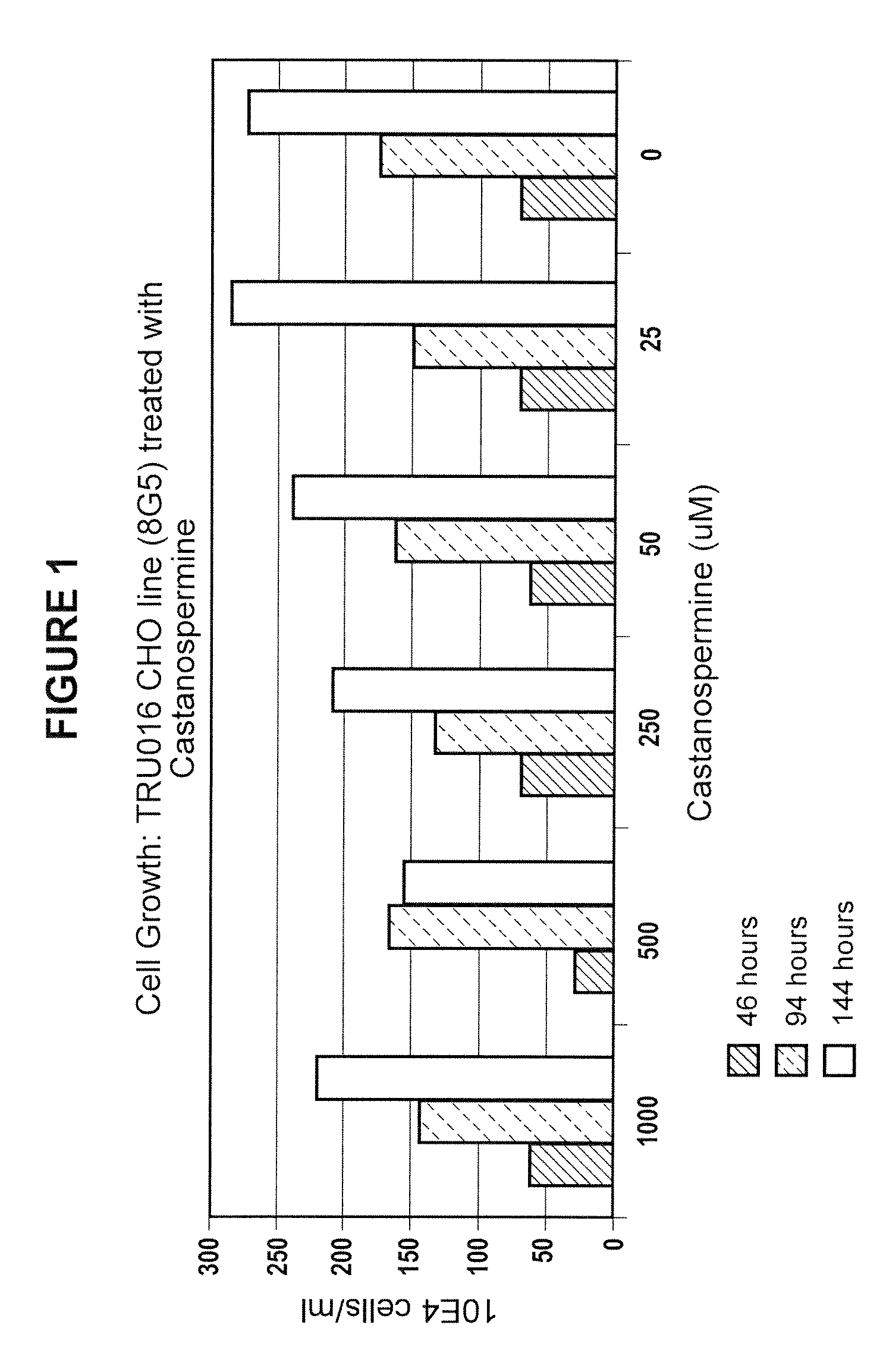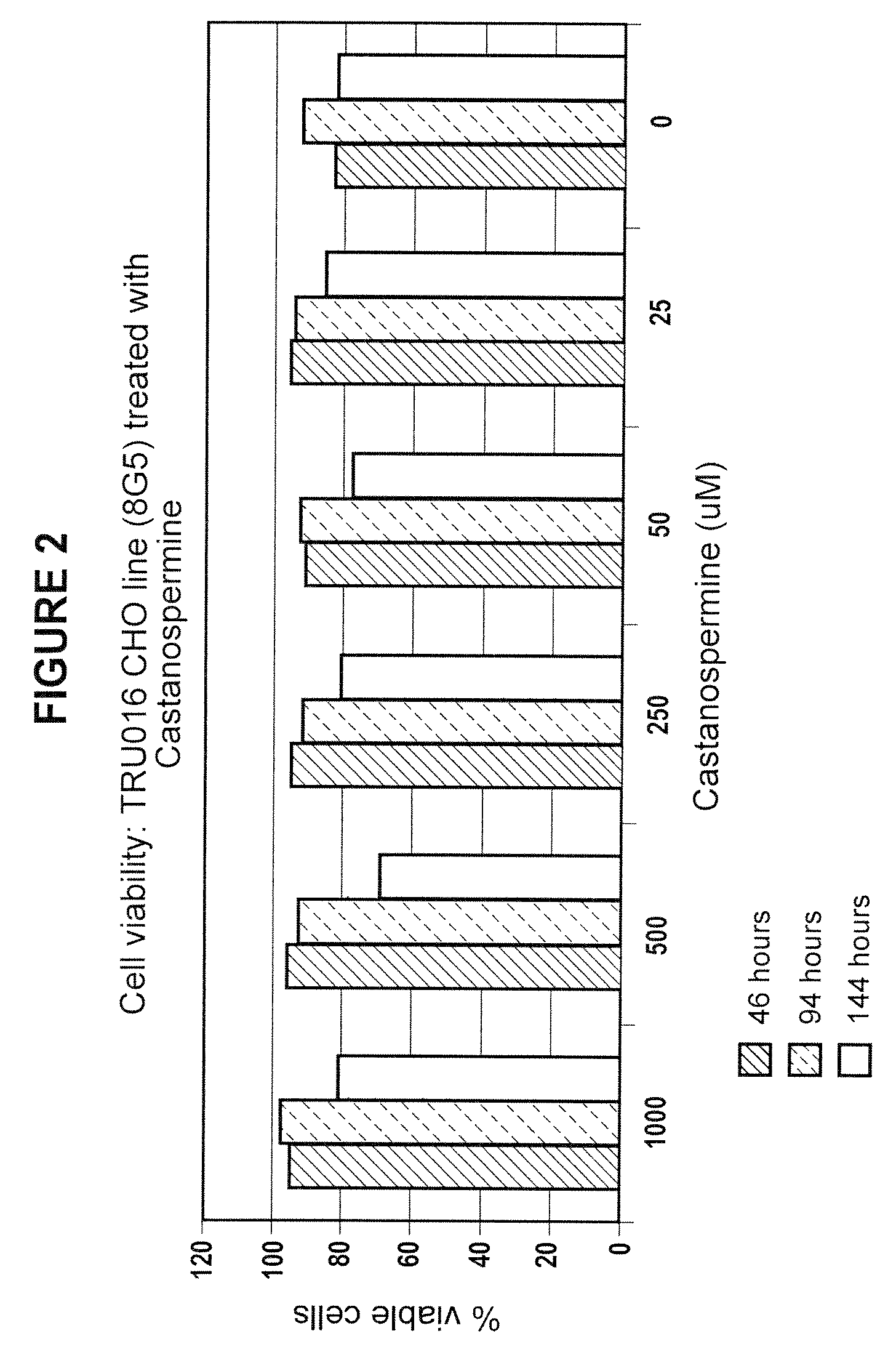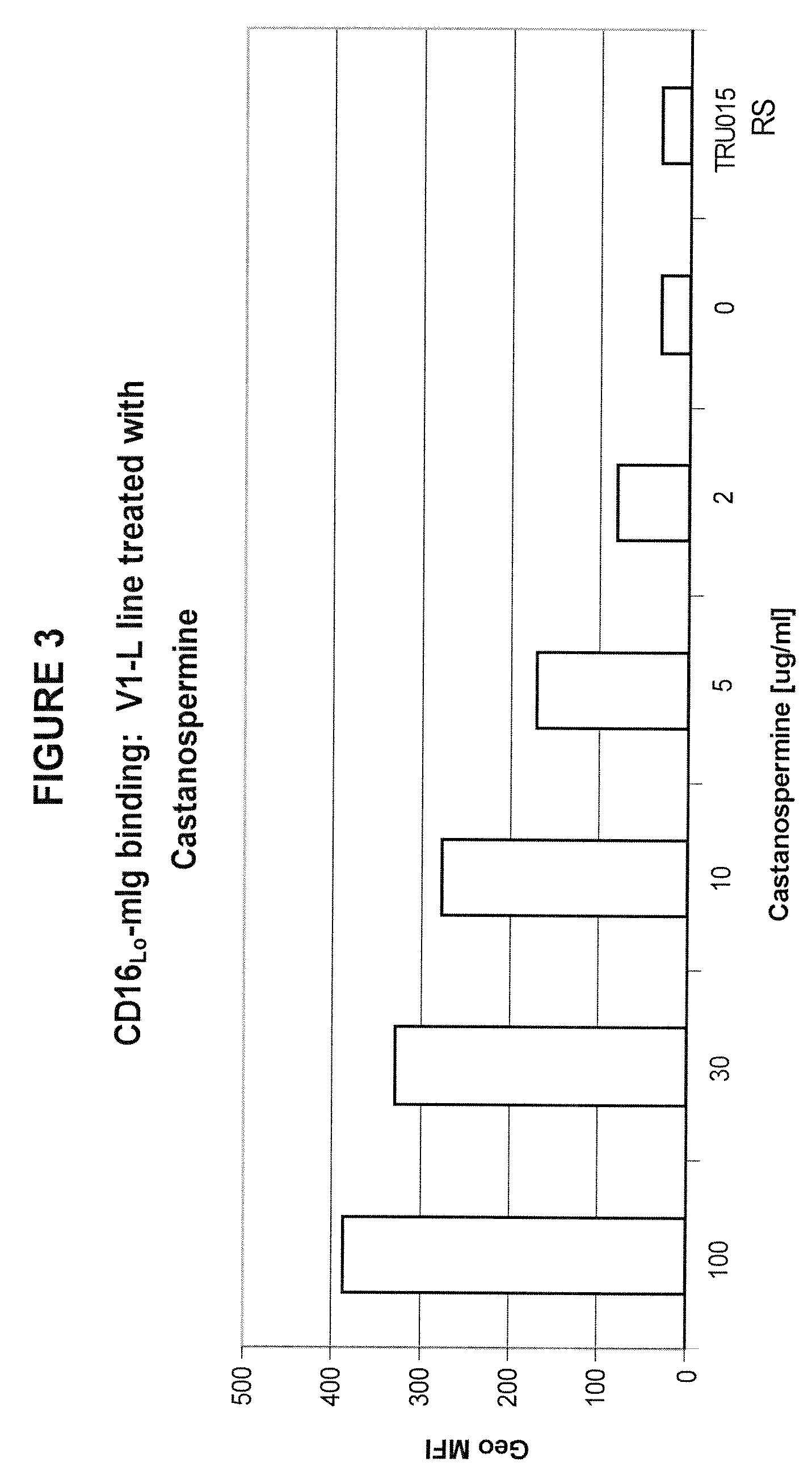Materials and methods for improved immunoglycoproteins
a technology of immunoglycoproteins and materials, applied in the field of immunoglycoproteins, can solve the problems of affecting the effect of immunoglycoproteins, so as to enhance the effector function, enhance the effector effect, and enhance the effect of antibody
- Summary
- Abstract
- Description
- Claims
- Application Information
AI Technical Summary
Benefits of technology
Problems solved by technology
Method used
Image
Examples
example 1
Production of SMIP Products
[0129]TRU-016
[0130]CD37-specific SMIPs are described in co-owned U.S. application Ser. No. 10 / 627,556 and U.S. Patent Publication Nos. 2003 / 133939, 2003 / 0118592 and 2005 / 0136049, each incorporated by reference herein in its entirety. An exemplary SMIP, TRU-016, is produced as described below. As used herein, TRU-016 refers to any CD37-specific SMIP.
[0131]TRU-016 [G28-1 scFv VH11S (SSC-P)H WCH2 WCH3] is a recombinant single chain protein that binds to the CD37 antigen. The nucleotide and amino acid sequences of TRU-016 are respectively set out in SEQ ID NOS: 1 and 2. Additional sequences are set forth in co-owned, concurrently filed U.S. patent application Ser. No. 12 / 437,507 [Entitled “B-CELL REDUCTION USING CD37-SPECIFIC AND CD20-SPECIFIC BINDING MOLECULES”, hereby incorporated by reference in its entirety. The binding domain was based on the G28-1 antibody sequence previously disclosed in the patent publications listed in the preceding paragraph, which d...
example 2
Culturing Host Cells with Carbohydrate Modifier
[0143]CHO cells transfected with TRU-016 or TRU-015 cDNA were cultured in shake flasks or wave bags with varying concentrations of various carbohydrate modifiers generally according to the procedures described below.
[0144]For shake flask runs, log phase host cells were seeded in shake flasks at 100,000 cells / ml with carbohydrate modifier at the concentration to be tested, and optionally with methotrexate (MTX) @ 50 nM.
[0145]Cells were seeded at 3×106 / mL in 1350 mL of Ex-Cell 302 culture media (SATC Biosciences; with added non-essential amino acids, pyrucate, L-glutamine, pen / strep, HT Supplement and insulin, all from Invitrogen) at t=0 and brought to 5 L total volume at T>=72 hours. The cells were incubated at 37° C. and 5% carbon dioxide and monitored for growth and viability daily starting at day 6-7. Supernatants were typically harvested at day 10-12 when cell viability dropped below 60%.
[0146]Na-Azide was added to 0.02%, cells were ...
example 3
Binding to FcRs
[0150]The immunoglycoproteins produced according to Example 2 were assayed in vitro for binding to soluble Ig-fusion versions of Fcγ receptors, in which the extracellular domain of a receptor is fused to murine IgG2a Fc.
[0151]The soluble Fcγ receptor materials were generated by fusing the extracellular domain of Fcγ Receptors I (Genbank Acc. No. BC032634), IIa (Genbank Acc. No. NM—021642), IIb (Genbank Acc. No. BC031992), and III-V158 (high affinity allele) (Genbank Acc. No. X07934) and III-F158 (low affinity allele), respectively, to a murine IgG2a Fc with a Pro to Ser mutation at residue 238 (MIgG2aP238S). For both forms of Fcγ RIII (CD16), an HE4 leader was cloned onto CD16 amino acids 1-178 and then fused to MIgG2aP238S.
[0152]The assays were carried out as follows. 500,000 WIL2-S cells (a B lymphoma cell line that expresses CD37 as well as CD20 on its surface) were incubated on ice in a Costar 96 well plate with 5 μg / ml of either TRU-015 or TRU-016 for 45 minutes ...
PUM
| Property | Measurement | Unit |
|---|---|---|
| volume | aaaaa | aaaaa |
| volume | aaaaa | aaaaa |
| volume | aaaaa | aaaaa |
Abstract
Description
Claims
Application Information
 Login to View More
Login to View More - R&D
- Intellectual Property
- Life Sciences
- Materials
- Tech Scout
- Unparalleled Data Quality
- Higher Quality Content
- 60% Fewer Hallucinations
Browse by: Latest US Patents, China's latest patents, Technical Efficacy Thesaurus, Application Domain, Technology Topic, Popular Technical Reports.
© 2025 PatSnap. All rights reserved.Legal|Privacy policy|Modern Slavery Act Transparency Statement|Sitemap|About US| Contact US: help@patsnap.com



